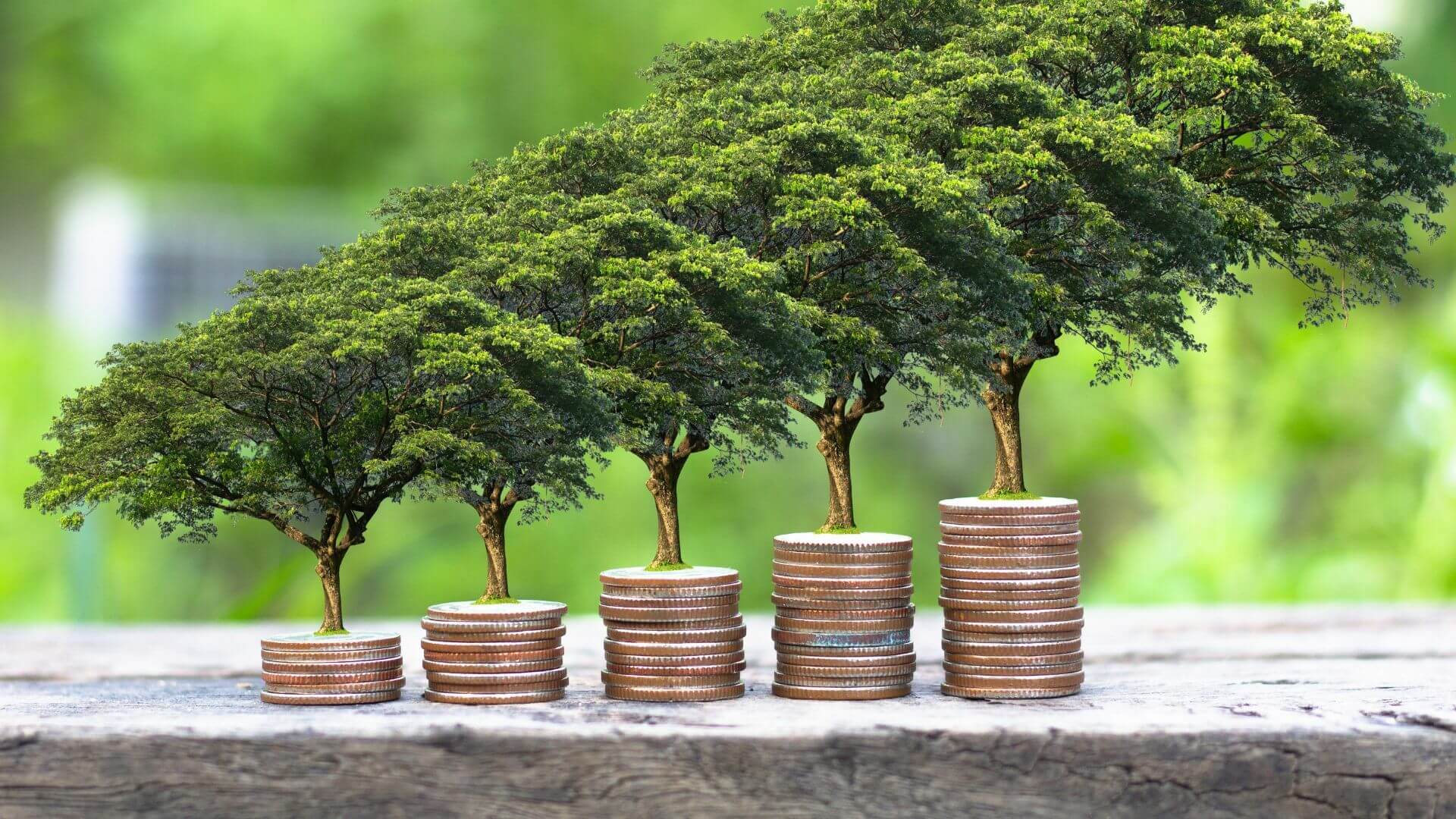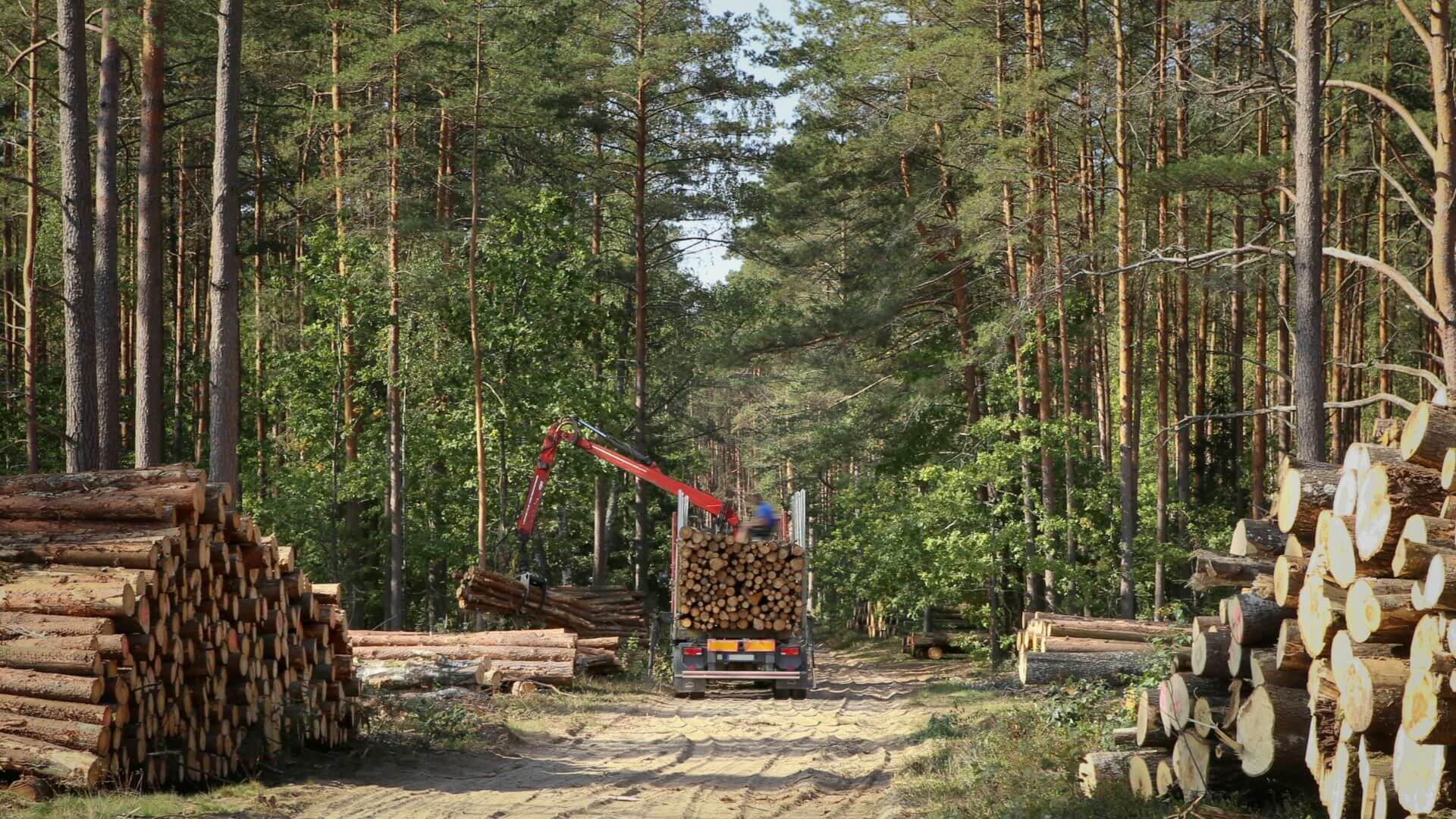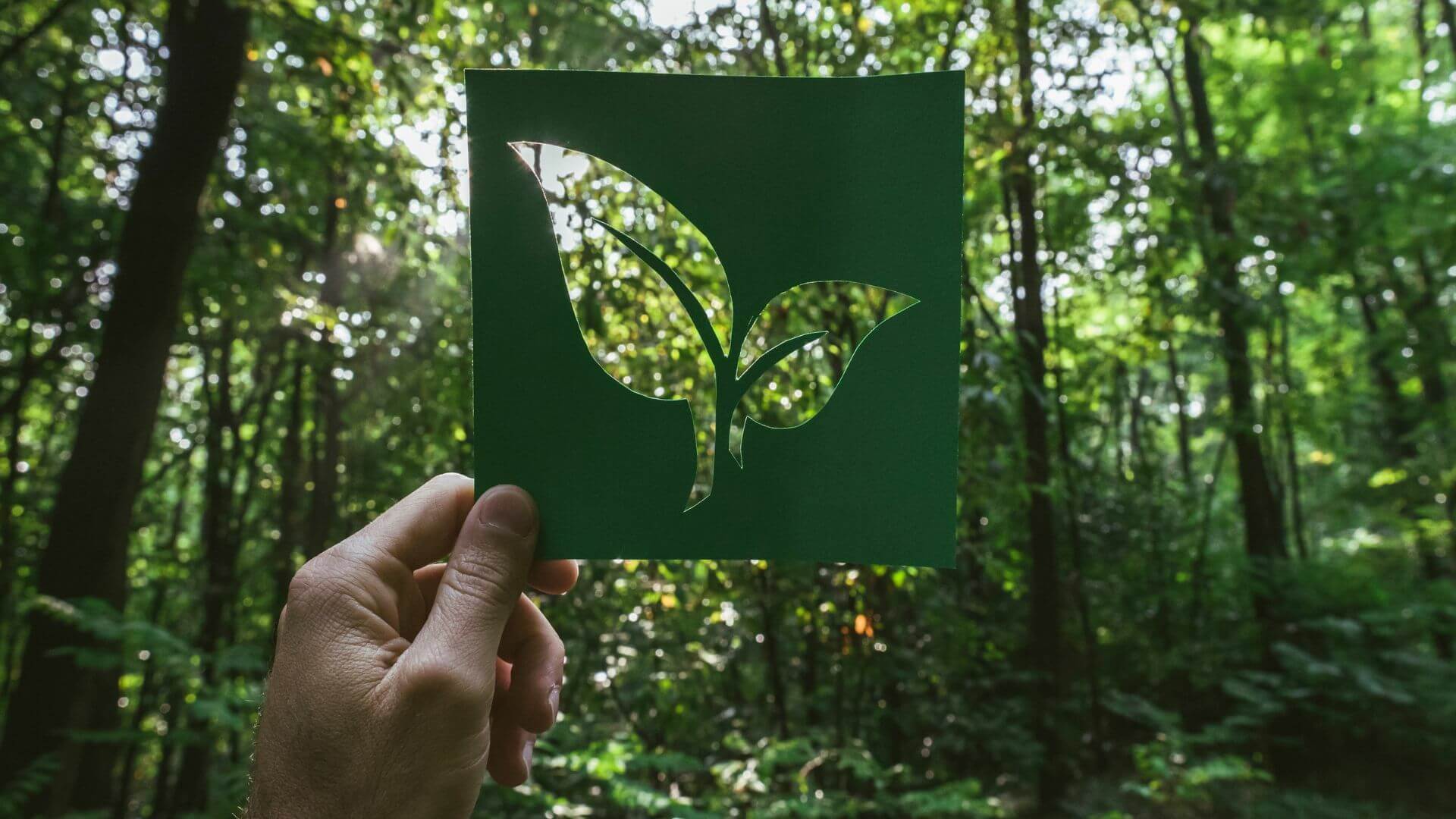When the Thompson family bought 50 acres in the Upper Peninsula (UP), they didn’t expect their trees to help fund retirement. But here’s the kicker—what if your land could fight climate change and pad your wallet? Sustainable timber harvesting in Michigan is more than a buzzword; it’s a profitable forestry management approach that supports Michigan timber conservation, aligns with Michigan DNR logging guidelines, and offers sustainable forestry tax benefits. Think of forests as slow-motion stock portfolios—steady, reliable, and full of long-term potential.
Below, we’ll walk through how sustainable timber harvesting Michigan landowners can balance profit with conservation, from tax breaks to best practices. Whether you own five acres or 500, read on to discover how you can grow your timber income responsibly.
Why Michigan’s Forests Are a Goldmine for Responsible Investors
 Our state boasts 20 million acres of forestland, and nearly 95% of it is sustainably managed for timber, wildlife, and recreation. The forestry sector contributes a whopping $13.4 billion annually to Michigan’s economy, supporting more than 42,000 jobs. That’s a lot of potential for folks looking to profit from responsible forestry.
Our state boasts 20 million acres of forestland, and nearly 95% of it is sustainably managed for timber, wildlife, and recreation. The forestry sector contributes a whopping $13.4 billion annually to Michigan’s economy, supporting more than 42,000 jobs. That’s a lot of potential for folks looking to profit from responsible forestry.
The “Slow-Motion Stock Portfolio”
Trees don’t grow overnight, but that’s what makes them stable investments. Like bonds or blue-chip stocks, forests appreciate steadily. Hardwood species like sugar maple and red oak mature slowly, but they command a premium price for furniture-grade timber. Meanwhile, fast-growing softwoods like white pine can offer quicker returns, especially if you manage them under a well-thought-out harvest schedule.
The Importance of a Forest Management Plan
A comprehensive forest management plan is your roadmap. It ensures you harvest responsibly, maintain biodiversity, and comply with Michigan DNR logging guidelines. If you’re new to this, consider hiring a consulting forester. In fact:
Pro Tip: Always hire a consulting forester—they pay for themselves by maximizing your timber’s market value and ensuring you follow state regulations.
Tax Incentives: How Michigan Rewards Sustainable Practices
 Owning timberland in Michigan can come with substantial tax perks if you play your cards right. Whether it’s capital gains treatment on timber income or special programs that encourage land conservation, you have multiple ways to keep more of what you earn.
Owning timberland in Michigan can come with substantial tax perks if you play your cards right. Whether it’s capital gains treatment on timber income or special programs that encourage land conservation, you have multiple ways to keep more of what you earn.
Capital Gains and Depletion Allowances
Timber income qualifies for a 15% capital gains tax rate (versus a higher ordinary income rate) if you’ve held the land for over a year. You can also take advantage of depletion allowances, essentially a tax deduction for the “cost” of the timber you remove. Each time you harvest, you can reduce your taxable income proportionate to the stumpage value of your timber.
Conservation Easements and 1031 Exchanges
If you want to keep your land forested forever (and potentially snag more tax breaks), consider a conservation easement. You’ll relinquish certain development rights, preserving the land for wildlife and timber growth while earning possible tax deductions. Another savvy move is a 1031 exchange, which lets you defer taxes on the sale of one property by reinvesting proceeds into another “like-kind” property—perfect if you’re scaling up your timber operation.
For more in-depth information, check out these MSU Extension resources (10). They offer detailed guidance on everything from capital gains classifications to federal and state tax credits.
The 2:1 Growth-to-Harvest Ratio: Proof of Sustainability
 One of the best indicators of Michigan timber conservation is our forests’ robust growth-to-harvest ratio. Statewide, Michigan’s timber volume grows at about twice the rate it’s being harvested—effectively a 2:1 ratio. Even more impressive, white pine grows around nine times faster than it’s cut. That means for every tree you harvest, two (or more) are springing up to replace it.
One of the best indicators of Michigan timber conservation is our forests’ robust growth-to-harvest ratio. Statewide, Michigan’s timber volume grows at about twice the rate it’s being harvested—effectively a 2:1 ratio. Even more impressive, white pine grows around nine times faster than it’s cut. That means for every tree you harvest, two (or more) are springing up to replace it.
This sustainable surplus speaks to Michigan’s well-managed forestry practices. Whether you’re a small landowner or a large-scale investor, you can harvest responsibly without worrying about depleting future supply. After all, a healthy forest isn’t just good for the environment—it ensures a stable market for timber down the line.
Best Practices for Eco-Friendly Timber Harvesting
 With great timberland comes great responsibility. To maintain that 2:1 growth-to-harvest ratio (and keep your neighbors happy), adhere to Michigan’s Best Management Practices (BMPs). These guidelines protect water quality, soil health, and wildlife habitats.
With great timberland comes great responsibility. To maintain that 2:1 growth-to-harvest ratio (and keep your neighbors happy), adhere to Michigan’s Best Management Practices (BMPs). These guidelines protect water quality, soil health, and wildlife habitats.
Selective Logging: Maximizing Profit While Protecting Biodiversity
Think of selective logging as choosing the ripest fruits without damaging the rest of the orchard. Instead of clear-cutting, you remove only mature or less-healthy trees, leaving younger stands to continue growing. This approach:
- Increases biodiversity by maintaining different tree ages and species.
- Reduces habitat disruption for wildlife.
- Allows for continuous, smaller harvests—often more profitable over time than one large clear-cut.
For more on selective logging and other BMPs, see the official Michigan DNR guidelines (2).
Soil and Water Conservation: Michigan’s BMPs You Can’t Ignore
BMPs in Michigan also emphasize buffer zones along streams and wetlands. These strips of unharvested land prevent soil erosion, minimize sediment runoff, and protect fish habitats. Simple steps like installing water bars on logging roads (small earth ridges) can channel water away from sensitive areas, preserving soil structure.
Michigan’s terrain can be tricky—especially in the UP, where steep slopes meet heavy snowmelt. Proper planning for road construction, drainage, and erosion control not only meets regulations but keeps your forest productive for decades to come.
Case Study: How a Family-Owned Forest Doubled Revenue in 10 Years
Let’s circle back to the Thompsons. When they first bought their 50-acre lot in the UP, the land was overgrown with mixed hardwoods and sporadic pockets of white pine. They hired a consulting forester who proposed a 10-year selective logging plan, focusing on mature hardwoods first. The family enrolled in a conservation easement to protect water resources, scoring a tax deduction in the process.
Fast-forward a decade: By using selective cuts every two to three years, the Thompsons doubled their revenue compared to a one-time clear-cut. They also maintained a thriving ecosystem—whitetail deer, turkeys, and even the occasional black bear roam freely. The icing on the cake? Their land’s overall timber value actually increased because the remaining trees continued to grow in both size and quality.
Navigating Michigan’s Logging Laws: Permits, Zoning, and Penalties
Michigan takes forest conservation seriously. That means landowners must follow a series of laws and regulations to ensure sustainable timber harvesting. From local ordinances to state-level permitting, you don’t want to skip this step—or you could face hefty fines.
- State Permits: Large-scale operations often need specific permits, especially if the harvest impacts wetlands or navigable waterways.
- Zoning Disputes: Some counties require special land-use permits if your harvest is near residential or commercial zones. Always check local zoning laws before cutting to avoid neighborly feuds.
- Penalties for Non-Compliance: Violating Michigan’s logging regulations can result in fines, forced reforestation, or even a temporary halt in operations.
When in doubt, consult a forester or an attorney who specializes in land-use law. It might cost you upfront, but it’s cheaper than dealing with lawsuits or environmental remediation later.
Future Trends: Carbon Credits, Mass Timber, and Agroforestry
Capitalizing on Carbon Credits
With climate change concerns on the rise, carbon credits offer a new revenue stream. By growing forests that sequester carbon, you can sell credits to companies aiming to offset their emissions. Rates vary, but long-term contracts can yield a steady, passive income. Michigan landowners stand to benefit substantially, given the state’s large forest base and robust growth rates.
2025 Mass Timber Building Codes
Mass timber—engineered wood products used in large-scale construction—has been making headlines. And for good reason: Michigan’s 2025 building codes now incentivize using wood from sustainably managed forests in mass timber construction. If you produce certified wood that meets structural requirements, you can tap into a rapidly growing market. The mass timber trends suggest this segment will boom over the next decade, driving demand for high-quality softwoods like spruce and pine.
Agroforestry: More Than Just Trees
Agroforestry combines traditional agriculture (crops, livestock) with forestry practices. In Michigan, think about grazing livestock among your trees or planting high-value crops like ginseng and mushrooms in shaded areas. These “forest farming” methods diversify your income and create additional habitats, turning your timberland into a multi-revenue system.
Potential Risks: Pests, Wildfires, and Zoning Disputes
Let’s not sugarcoat it—owning timberland comes with risks. Just like you’d diversify your investments in stocks and bonds, you need a proactive plan for pests, wildfires, and even local zoning battles.
- Pests and Diseases: Emerald ash borer, gypsy moths, and beech bark disease can ravage entire stands. Stay vigilant by monitoring tree health, and consider planting more resilient species.
- Wildfires: While Michigan isn’t as fire-prone as some western states, dry summers in the Lower Peninsula can spark brush fires. Maintain fire breaks, clear underbrush, and keep your property accessible to emergency vehicles.
- Zoning Disputes: Rapid urbanization can turn quiet forests into prime real estate, pitting landowners against developers. Keep abreast of county-level zoning updates and join local landowner associations for a unified voice in policy discussions.
A well-thought-out forest management plan will account for these risks, ensuring your land remains profitable and healthy for the long haul.
Bringing It All Together: Profit Meets Conservation
Sustainable timber harvesting in Michigan isn’t just about cutting trees. It’s about nurturing a long-term investment, preserving wildlife habitats, and contributing to the local economy. By blending selective logging, BMPs, and robust tax strategies, you can reap significant profits while leaving your forest better than you found it.
Balancing Short-Term Gains with Long-Term Vision
Yes, you could do a massive clear-cut and cash out. But you’d risk eroding the land’s ecological and financial value. Selective harvests, ongoing land stewardship, and reforestation efforts (when needed) ensure that you—and future generations—can profit for decades to come.
Community and Education
Don’t forget the power of local networks. Organizations like the Michigan Forest Association offer workshops and resources to help landowners manage their forests responsibly. Sharing experiences with other landowners can give you practical tips on everything from pest control to timber auctions.
Final Thoughts
Owning timberland in Michigan can be incredibly rewarding, both financially and ethically. The Thompsons discovered that with a good plan and professional help, their forest essentially became a green savings account—growing steadily while contributing to carbon sequestration and wildlife conservation. Whether you’re eyeing a small patch of hardwoods or expanding a commercial stand, sustainable timber harvesting offers a win-win scenario.
So, what if your land could fight climate change and pad your wallet? In Michigan, that’s not just a rhetorical question—it’s a reality waiting for you to tap into. By staying informed, hiring the right experts, and following Michigan’s proven BMPs, you can harvest profits and keep your forest flourishing. After all, forests are like slow-motion stock portfolios—just make sure you’re the savvy investor guiding them toward sustainable growth.